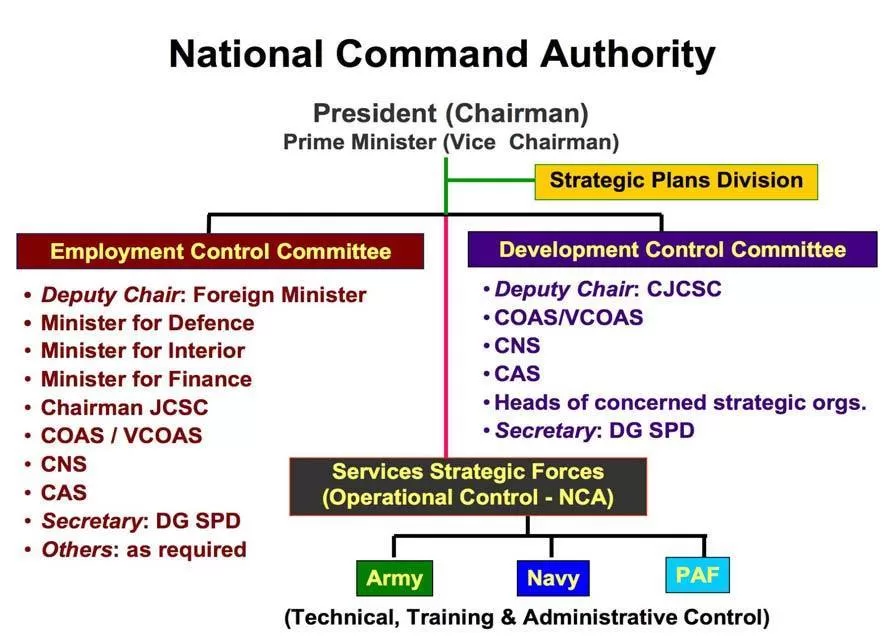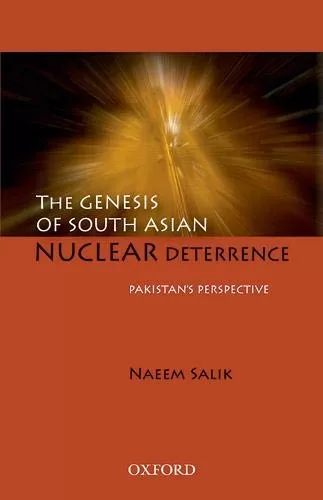Brigadier retired Naeem Salik is considered an authority on the study of nonproliferation, security and strategic issues. His descriptive style study on ‘The Genesis of South Asian Nuclear Deterrence: Pakistan’s Perspective’ tries to elucidate an overall setting created by South Asian nuclearization. The writer traces the genesis of nuclearization of South Asia via an overview of the strategic interaction between two South Asian states and their resultant nuclear programs i.e. India and Pakistan. In 1998, the practical manifestation of the nuclearization in South Asian region escalated a new debate internationally through challenging the existing status quo, at that period in time, shaped by the nonproliferation regime. The NPT, an effective regime to prevent the proliferation of nuclear weapons, received two non-signatories nuclear powers from South Asia. The nuclear tests of Indian and Pakistan did not only surprise the members of nuclear club but it also shifted the two antagonist states of South Asia into a new security environment. The writer starts discussion in view of the major security concerns behind the nuclear programs of India and Pakistan. He concludes the debate by delineating the safety and security milieu of Indian and Pakistani nuclear weapons, in the post 9/11 world.
In this scholarly work, Salik covers multifarious dynamics of South Asian nuclearization. He emphasized the nuclear doctrines of both India and Pakistan, described their command and control systems, deterrence stability, confidence building measures, restraint regime and nuclear delivery systems (Missiles developments). He also points out the misperceptions, myths and controversies associated with Pakistan’s nuclear program, which includes the AQ Khan network and the safety, security and safeguarding (3S) of nuclear facilities. In sum, this book provides a realistic approach to the study of South Asian nuclearization.
This comparative study, comprising of ten chapters, discusses the dynamics of South Asian nuclear environment, by explaining the historical development and evolution of Indian and Pakistani nuclear programs. Security was a fundamental concern behind the nuclear programs of South Asian traditional rivals. Historically, the Indian Peaceful Nuclear Explosion (PNE) under Buddha’s smile in 1974 forced Pakistan to start its nuclear program. On March 1975, “Pakistan signed an agreement with France for the supply of reprocessing plant” (p.86).In this way, the action reaction phenomenon is an appropriate concept to understand Pakistan’s defensive response to Indian nuclear program. In 1998, Indian nuclear tests forced Pakistan to declare its nuclear status by responding against Pokhran II. In this bilateral nuclear conflict, Indian behavior pushed Pakistan in the Chaghi district of Balochistan, where the country tested five nuclear tests and became the seventh nuclear power.
Furthermore, this study of South Asian nuclearization also discusses the role performed by nuclear nonproliferation regimes including NPT, CTBT and FMCT, in the light of India’s and Pakistan’s national stance. An interesting portion of this book points out the development of Indian five missile system, which is an overt violation of MTCR. In addition, Indian initiative of ABM system, Indian civilian nuclear deal with US, Indian strategic relations with Israel and its regional hegemonic model exploiting Pakistan to continue its nuclear program rather than focusing on the proposals of leading South Asia towards a nuclear weapons free zone. Despite the international criticism, Pakistan emphasized on bilateral or regional approach to nuclear nonproliferation. India’s denial shifted Pakistan’s attention on the Indian possibility of joining the nuclear club and acquiring the permanent membership of UNSC, rather than concentrating on the spread of nuclear weapons internationally.
The descriptive style of Salik highlights an insight of South Asian nuclear environment while addressing the cores issues and international concerns associated to Pakistan’s nuclear program. Regarding CTBT, Pakistan has three sentences which are:
“Pakistan was not the first to start testing, it will not be the first to resume testing and it will not stand in the way of implementing this treaty “(p. 183).
“On the other hand, Pakistan has showed its attention “to go with the consensus at the CD on the issue of FMCT” (p. 184), but the Indo-US nuclear agreement will have serious consequences in view of Pakistan’s security concerns. In this way, regarding South Asian security environment, the nuclearization opened a new chapter in the history of nonproliferation, because both India and Pakistan are still strengthening their safety and security mechanisms of their respective nuclear programs.

Salik presents the dynamics associated with the strength of safety and security system of Pakistan’s nuclear program. Unlikely India, Pakistan is facing international criticism over its nuclear program despite the fact that the country has developed “National Command Authority (NCA) in 1999, the Strategic Planning Division (SPD), which is a permanent secretariat of NCA and Army Strategic Force Command (ASFC)” (P.283). Moreover, Pakistan has developed Pakistan Nuclear Regulatory Authority (PNRA) in 2001 to deal with safety of nuclear material under National Nuclear Safety Action Plan. While cooperating in the international realm of nuclear safety and security, Pakistan is an active member of both Nuclear Safety Convention and Conventional on Physical Protection of Nuclear Material (CPPNM). In 2006, Pakistan in agreement with US, signed the Container Security Initiative (CSI). Pakistan also announced its cooperation with the US – Russian sponsored Global Initiative for Prevention of Nuclear Terrorism. Apart from all the aforementioned efforts, the continued pressure and criticism on Pakistan’s nuclear status has damaged the country’s international standing and image. In sum, the whole debate of Salik recalls the nuclear history of South Asian region through a Pakistani perspective.
The incisive outlook of South Asian nuclear race, provided by Salik’s study of the nuclearization of South Asian region, is helpful for the stakeholders, policymakers and the decision makers regarding the comprehension of South Asian strategic environment. This book covers diverse aspects of nuclear program of both India and Pakistan while providing some narrative through Pakistani lens. Furthermore, this book is helpful for understanding the nuclear politics of South Asia.




